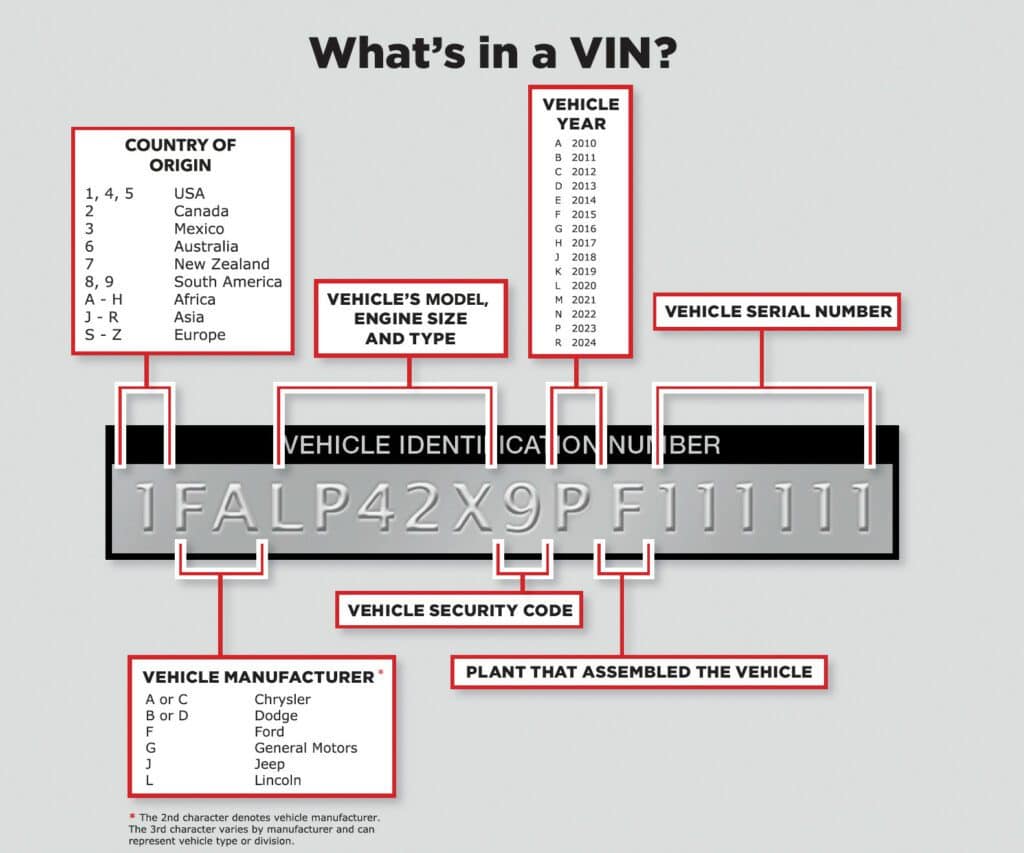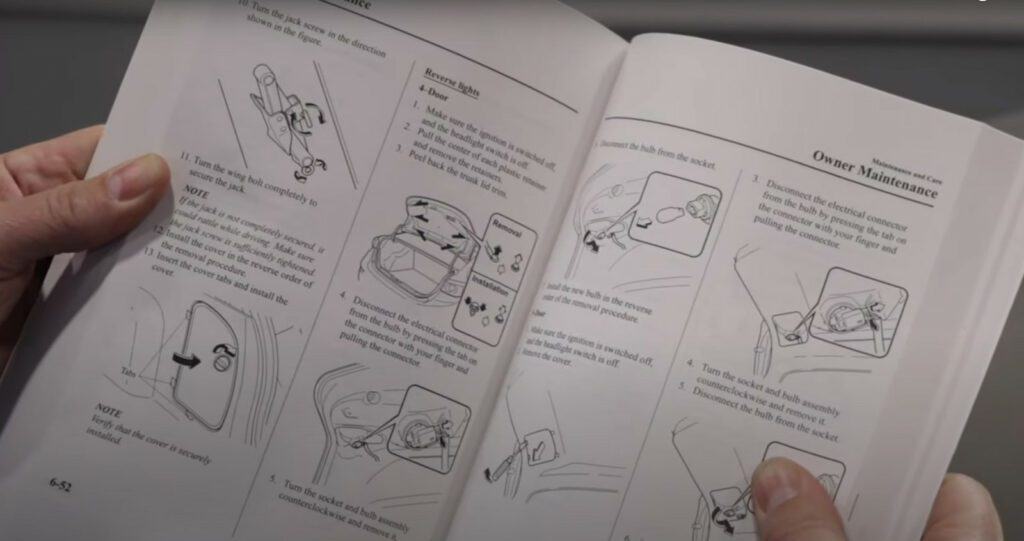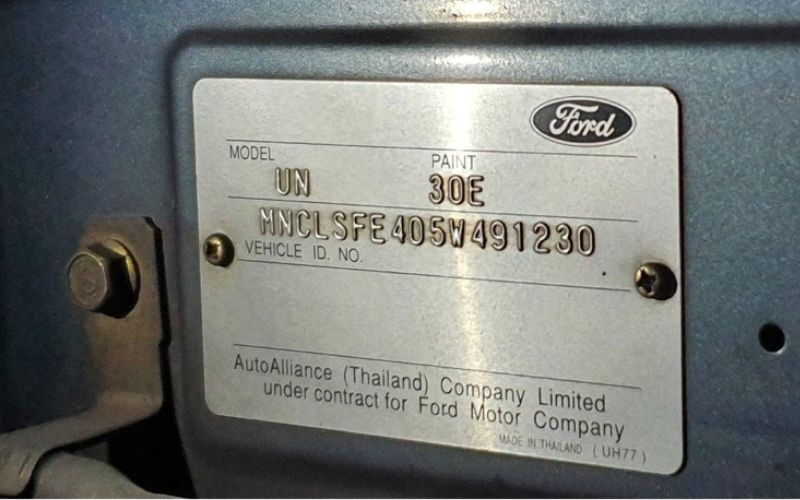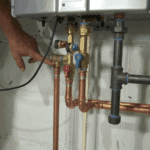The last thing you want as a towing truck owner is to risk damaging your truck due to insufficient knowledge of its towing capacity. Moreover, not only does that compromise your own safety, but it also poses a risk to others on the road. This is where your truck’s VIN number can come in handy, which can help you accurately estimate the towing capacity of your truck.
However, most truck owners don’t know what the VIN number is or how they can find it. In this article, I will walk you through simple steps to quickly find the VIN number and use it to determine your truck’s towing capacity. So, without further ado, let’s jump right in.
What is Towing Capacity?
The towing capacity of a truck refers to the maximum amount of weight it can safely pull. This also includes the weight of everything inside the trailer, including cargo, passengers, and fuel. Keep in mind that the towing capacity of a truck can vary depending on a few different factors, including horsepower and torque of the engine, make and model of the truck, gear ratio, hitch type, frame, and chassis strength, and the towing package.
Deciphering Your Truck’s Towing Capacity
Before we can calculate the towing capacity of your truck, we need to go through some important terminologies. These terminologies will serve as data points that can give you important information that will help you accurately calculate the towing capacity of your truck.
GVWR
GVWR stands for Gross Vehicle Weight Rating. It is the maximum weight of your truck and everything that it can carry. This includes the weight of the vehicle itself, the weight of any passengers or cargo, the weight of any trailers that are being towed, and the hitch weight.

GCWR
GCWR stands for Gross Combined Weight Rating. This is how much your trailer and vehicle can weigh combined with all the cargo. If you combine the GVWR and the towing capacity of your vehicle you will get your GCWR.
GAWR
GAWR stands for Gross Axle Weight Rating. The GAWR is the maximum weight that can be carried by each axle of your truck. This includes the weight of the axle itself, the wheels, the tires, and any cargo or passengers that are on that particular axle.
Payload
The payload of your vehicle is the maximum weight of cargo and passengers that your vehicle can carry. You can get it by subtracting the curb weight of your truck from its GVWR. Alternatively, you can find your payload in the door jam of your vehicle. Most modern vehicles have a yellow sticker in the door jamb that says tire and loading information. Find where it says ‘the combined weight of occupants and cargo should never exceed:’ that is your vehicle’s payload.
Hitch Weight and Class
Another data point that you need to be aware of is the hitch weight of your trailer. This is the weight that is pushing down on the hitch of your vehicle. You can easily find this in your trailer specification. Keep in mind that the hitch dry weight doesn’t include the propane, batteries, electric jack, cargo, and water. So, be sure to multiply your GVWR by .15 to get an approximate hitch weight for your vehicle. You also need to know your hitch class. Here is an image that shows the different hitch classes depending on the weight ratings.
It is also important that your vehicle’s hitch weight is properly distributed. Otherwise, you may face handling issues which can lead to accidents. This is where a weight distribution hitch can come in handy. For more information on this topic, you can read our detailed article ‘Do You Need A Weight Distribution Hitch When Towing A Travel Trailer?’, which covers everything you might need to know about weight distribution hitches.

Here is an image that shows how all the above-mentioned terms relate to each other.
Calculating The Towing Capacity
There are a few different ways to calculate your truck’s towing capacity. The most accurate way is to look up the specs for your specific truck model and year. You can do this by finding your VIN and using it to look up the towing capacity in an online database.
Another way to estimate the towing capacity is by looking at the truck’s GVWR (gross vehicle weight rating). As mentioned earlier, this is the maximum amount of weight that your truck can safely carry, and it includes the weight of the truck itself, as well as any passengers or cargo.
To calculate the towing capacity, you need to subtract the GVWR from the curb weight, i.e., the weight of the truck without any passengers or cargo.
For example, let’s say your truck has a GVWR of 6,000 lbs and a curb weight of 4,500 lbs. This means that your truck can tow 1,500 lbs. However, keep in mind that this is just an estimate, and it’s always best to look up the specific towing capacity for your truck model and year.
What Is the VIN Number and How to Find It?
A VIN is a 17-digit code that is assigned to every vehicle. It’s like the social security number for your car. No two vehicles have the same VIN, which makes it a great way to identify a specific vehicle. The VIN can tell you a lot about a vehicle, such as its manufacturer, year, make, model, and even some of its features.
Common places to find the VIN number
Before trying to find the VIN number, be sure to check the owner’s manual first, which can give you the exact VIN location for your vehicle. Alternatively, you can make a call to the local dealership to find the exact location of your vehicle’s VIN number. If you can do that, here are some common places where you might be able to find the VIN number for your vehicle.
Front Windscreen: Most modern vehicles have a visible VIN number located on the bottom right or left corner of the windscreen.

Passenger Door Jamb: In some modern vehicles, the VIN number is located on a sticker in the passenger side door jamb.

Footwell: Check in both driver and passenger footwells, including under or on the side of the front seat.
Engine compartment: In some older vehicles, VIN plates are riveted on the front panel inside the engine compartment or on top of the suspension housing.

Trunk: In some vehicles, the VIN number can be located in the trunk stamped on a VIN plate under the carpet or under the spare wheel.

Chassis Frame: Usually, larger 4×4 vehicles have VIN numbers stamped into the chassis frame. You can find it by looking just behind or in front of the front wheel.

What does the VIN number tell you?
Now that you know how to find your VIN, let’s take a closer look at some of the specific information it can give you about your vehicle.
The first thing you’ll notice is that the VIN is 17 characters long, each of which has a specific meaning.
The VIN sticker will have the following information:
- Make and model
- Year
- Trim level
- Engine size
- Transmission type
- Drivetrain
- Brake system
- Suspension system
- Towing capacity
- Payload capacity
- Curb weight
- Gross vehicle weight rating (GVWR)
- Gross axle weight rating (GAWR)

Here’s a further breakdown of what each character in the VIN means:
- The first character indicates the country where the vehicle was manufactured. 1, 4, and 5 indicate the US, 2 is Canada, and 3 is Mexico.
- The second character indicates the manufacturer. G is for General Motors, C can stand for Chevrolet, and B is for BMW.
- The third character indicates the vehicle type. Combined, the first three digits are called the World Manufacturer Identifier.
- The fourth and fifth characters indicate the body style.
- The sixth character indicates the engine type.
- The seventh character indicates the vehicle’s model year.
- The eighth character indicates the assembly plant.
- The ninth character is a check digit and acts as a security code to verify the authenticity of the VIN itself.
- The tenth character indicates the model year of the vehicle.
- The eleventh character indicates the assembly plant where the vehicle was made. Each assembly plant has its own digit. Combined with the manufacturer label in digit 2, you’ll be able to tell where the vehicle was assembled.
- 12-17 These last six digits are called the Vehicle Identification Sequence, and they’re used to identify each individual vehicle. Digits 10-17 comprise the vehicle identification section.
Now that you know how to read a VIN, you can use it to look up information about your truck, such as the towing capacity, payload capacity, and even the model year.
You can also use the VIN to register your truck, get insurance, and keep track of maintenance and repair records.
Looking Up Towing Capacity By VIN
Here are three ways you can use your vehicle’s VIN number to find out its towing capacity.
- User manual: Look up the towing capacity in the owner’s manual.

- Online databases: You can check your vehicle’s towing capacity using online databases, such as the one provided by Edmunds.com, Kelley Blue Book, or Consumer Reports. Although these databases don’t use the VIN number, you can directly select your vehicle’s make and model and get its detailed specifications.
- Contact the manufacturer: You can also call the truck’s manufacturer and ask them for the towing capacity. You can find your manufacturer’s contact information in your vehicle’s user manual or documentation. Alternatively, visit the manufacturer’s official website and look for a contact us or support options.
- Online VIN Decoder: Online VIN decoders can provide you with comprehensive information about your vehicle. Although they don’t explicitly tell you the towing capacity they give you enough information to make an educated guess. ElectricVehicleForums.com is a great website to find detailed information about your vehicle against the VIN number. All you have to do is enter your VIN number in the provided field and you will get all the necessary information about your vehicle.
Keep in mind that the towing capacity listed by the manufacturer may be different from the towing capacity listed in the owner’s manual or online databases. This is because the manufacturer’s towing capacity is usually calculated using a lower weight limit for the trailer and its contents as opposed to the one listed in the owner’s manual and online databases.
When in doubt, it’s always best to err on the side of caution and use the lower towing capacity. Overloading your truck can damage the engine, transmission, brakes, and suspension. It can also void your truck’s warranty.
Once you know the towing capacity of your truck, you can start shopping for a trailer that falls within that weight limit. If you are wondering whether or not there is a way to increase the towing capacity of your truck, read our comprehensive guide on ‘How to increase the maximum towing capacity of a truck or SUV.
Important Guidelines for Safe Towing
- Be sure to never exceed the towing capacity of your vehicle. This can cause considerable damage to the engine and transmission, making the vehicle more difficult to control. In some cases, it might even lead to rollover accidents.
- Manufacturers are always in a war to claim the most towing capacity. In reality, your truck is not going to have anywhere near the towing capacity that the manufacturer is advertising. Their towing capacity is based on ideal conditions, like level road surface and no wind. Keep in mind that in the real world, you won’t have those conditions, and thus, the actual towing capacity will be significantly lower.
- Do not confuse towing capacity with payload; they are two completely separate things. Towing capacity is the maximum weight a vehicle can tow behind it, while payload refers to the maximum weight a vehicle can carry inside it.







2 Comments
Bob Evans
1 year agoHow much over the max trailer weight should a truck be able to tow? Example: I am looking at a 5th wheel that has GVRW of 14K lbs and hitch weight of 2180lbs. The truck I am looking at has a 5th wheel tow limit of 14,580lbs and a payload capacity of 2940lbs. Is that enough capacity?
AC
8 months agoOnly if you don’t load your truck with more than 760lbs… including passengers..